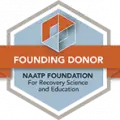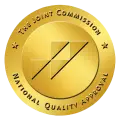At our facility, we offer a continuum of care that moves you step by step through the recovery journey. Each level is designed to meet a specific stage of need, beginning with detoxification and progressing through stabilization and residential treatment. The goal: equip you with the tools and support to sustain long term recovery.
Our main levels of care include detox, stabilization, and residential treatment. Each level addresses the unique needs of our patients at various stages of their recovery journey. They are also designed to provide the support and treatment needed to achieve long-term recovery.
Keep reading to find out more about the levels of care for substance abuse treatment we offer at Magnolia City Detox in Houston, Texas, and how they can help you overcome substance abuse.
At our Houston medical detox program, everything starts with a comprehensive assessment to understand the severity of addiction and any related mental health concerns. Based on this, we guide each person to the level of care that best fits their needs.
Our continuum of care includes:
- Medical Detox: Safe, supervised support to manage withdrawal symptoms.
- Stabilization Program: Building physical and emotional strength while beginning therapy.
- Residential Treatment: Intensive, structured care to develop healthy coping skills and long-term habits.
Recovery isn’t always a straight path. That’s why our program allows clients to move up or down in care as needed, ensuring the right support at every stage and helping reduce the risk of relapse.
We also recognize that addiction is a long-term condition that requires ongoing attention. Our personalized, whole-person approach, focused on the mind, body, and spirit, helps clients achieve lasting recovery and better overall well-being.
Levels of Care: Detox
The safest way to detox is in a medical setting while being supervised by medical professionals. Medications are often used to manage withdrawal symptoms, which vary depending on the substance and the severity of the addiction. Withdrawal symptoms can range from mild discomfort to severe and even life-threatening complications.
Detox is the first level of care for substance abuse treatment because it lays the foundation for the rest of the recovery journey. It allows patients to physically and mentally prepare for the next level of substance abuse treatment.
A person can not proceed with other forms of treatment without first detoxing because withdrawal symptoms make it difficult to focus on recovery. Furthermore, detox helps break the physical dependence on drugs or alcohol, which is crucial for long-term recovery.
Medications Used During Detox
During detox, certain medications can help ease withdrawal symptoms and make the process safer and more comfortable. These medicines are prescribed based on each person’s specific needs and the substance involved. Common medications used in detox include:
- Antidepressants — Help relieve symptoms like depression, anxiety, and restlessnessespecially during withdrawal from stimulants such as cocaine or methamphetamine.
- Methadone — Often used for opioid withdrawal. It works by targeting the same brain receptors as opioids but without causing a high, helping reduce cravings and discomfort.
- Buprenorphine — Another medication for opioid detox. It partially activates opioid receptors to lessen cravings and withdrawal symptoms.
- Naltrexone — Blocks the effects of opioids and may be used along with methadone or buprenorphine to prevent relapse.
- Benzodiazepines — Commonly used to manage alcohol or sedative withdrawal. They calm the nervous system and reduce anxiety and agitation.
Some of these medications can be habit-forming. They must be carefully monitored by medical professionals. Medication is just one part of the process. It works best when combined with therapy, counseling, and ongoing support to promote lasting recovery.
Levels of Care: Stabilization
During this phase, individuals start exploring the emotional and psychological roots of their substance use, such as anxiety, depression, trauma, or chronic stress. Through individual and group therapy, participation in support groups, and life skills training (like stress management, communication, and healthy routines), individuals start to rebuild balance and confidence.
The main goal of stabilization is to develop coping skills, manage cravings, and create healthy habits that support lasting recovery.
This stage lays the foundation for long-term healing by providing the structure, tools, and mindset needed to move forward successfully into the next level of care.
Levels of Care: Residential Treatment
Living in a structured, trigger-free environment allows you to step away from everyday distractions and dedicate your energy to healing. During this time, you’ll take part in individual therapy, group sessions, and holistic activities like mindfulness, yoga, and recreational therapy. You’ll also build connections through a supportive peer community.
Residential treatment promotes deep personal growth. It’s where you begin to rebuild relationships, establish healthy routines, and create a sustainable plan to prevent relapse and maintain long-term sobriety.
How Therapy Supports Long-Term Addiction Recovery
Working one-on-one with a therapist helps clients uncover underlying issues such as anxiety, depression, trauma, or chronic stress, factors that often contribute to substance use. By understanding these deeper patterns, clients learn healthier coping skills and gain tools to make better choices in the future.
Therapy also helps individuals work through feelings of guilt, shame, or regret, replacing self-blame with self-compassion, an essential part of lasting recovery.
In addition, therapy sessions focus on setting realistic goals, identifying triggers, and creating practical strategies to manage them. This process gives clients a clear sense of direction and confidence as they move forward in their recovery journey.
Why Choose a Continuum of Care Approach?
A continuum of care ensures that your treatment evolves as you do, offering the right level of support at every stage of recovery instead of a one-size-fits-all plan.
This approach allows you to move smoothly from one phase to the next, starting with medical detox, then stabilization, and finally residential treatment. Each stage provides the right amount of care and structure for where you are in your journey.
Because every step builds on the last, this model helps reduce the risk of relapse by ensuring you don’t move forward too quickly and that you’re fully prepared for the next phase.
Most importantly, the continuum of care recognizes that addiction is a chronic condition, not something that can be treated in a single moment. It provides ongoing, personalized support to help you achieve lasting recovery and long-term wellness.

















